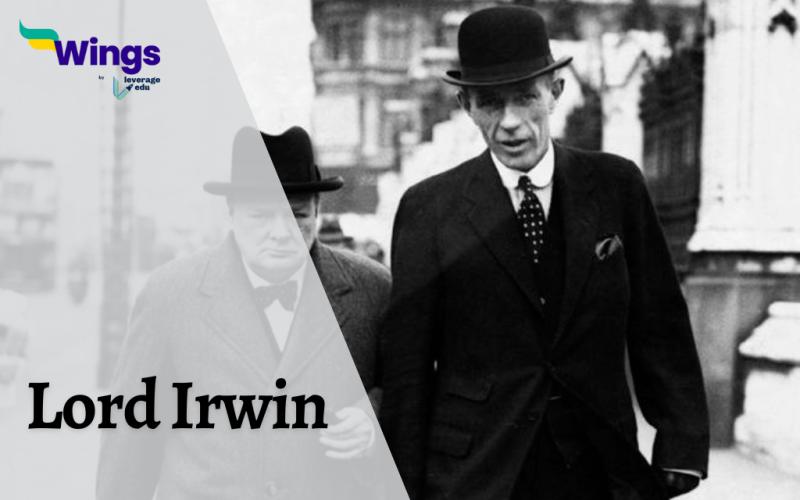Edward Frederick Lindley Wood, 1st Earl of Halifax, KG, OM, GCSI, GCMG, GCIE, TD, PC, known as Lord Irwin from 1925 until 1934 and The Viscount Halifax from 1934 until 1944, was born on June 5, 1881, in Yorkshire, England. He was the eldest son of Charles Lindley Wood, 1st Viscount Halifax, and Lady Mary Frederica Henrietta (née Lascelles). He was educated at Eton College and Christ Church, Oxford, where he studied philosophy, politics, and economics.
After graduating from Oxford, Wood entered politics. He was elected to the House of Commons in 1910 as a Conservative MP for Ripon. During World War I, Wood served in the British Army. He was awarded the Distinguished Service Order for his bravery in action. After the war, Wood returned to politics. He served in a number of ministerial positions in the British government, including President of the Board of Education and Minister of Agriculture.
Table of Contents
Major Role in India
Lord Irwin was appointed Viceroy of India in 1926. He arrived in India at a time of great political unrest. The Indian independence movement was gaining momentum, and there were widespread protests against British rule.
Irwin was a sympathetic figure. He believed that India should eventually be granted independence. However, he also believed that it was important to maintain order and stability in the meantime.
Also Read – Full List Of Viceroys Of India
Irwin’s tenure as Viceroy also saw the Simon Commission, which was appointed to investigate the possibility of constitutional reform in India. The commission was boycotted by Indian nationalists, but it did recommend some important reforms, such as the establishment of a federal system of government in India.
Gandhi- Irwin Pact of 1931
Irwin’s most significant achievement in India was the signing of the Gandhi-Irwin Pact in 1931. The pact was an agreement between Irwin and Mahatma Gandhi, the leader of the Indian independence movement. The pact ended a period of civil disobedience that had been launched by Gandhi and his followers.
The Gandhi-Irwin Pact was a major step forward in the Indian independence movement. It showed that the British government was willing to negotiate with the Indian nationalists. It also helped to build trust between the two sides.
Also Read – What is the Difference Between Governor-General and Viceroy?
Achievements
Two of the biggest achievements added to the hat of Lord Irwin are –
- The successful signing of the Gandhi-Irwin Pact in 1931, ended a period of civil disobedience in India and helped to build trust between the British government and the Indian nationalists.
- Oversaw the Simon Commission, which recommended important reforms to the Indian government, such as the establishment of a federal system.
What were the challenges that Lord Irwin faced?
Some of the challenges that he faced during his time as a viceroy of India were –
- Societal – One of the biggest challenges was the Indian independence movement. The movement was gaining much momentum, and there were protests against British rule spreading in various parts of the country.
- Economical- Irwin also had to deal with economic problems. India was suffering from the effects of the Great Depression, and there was widespread poverty and unemployment.
- Political- In addition, Irwin had to deal with internal divisions within the British government. There was a growing group of British officials who believed that India should be granted independence immediately. However, there was also a group of officials who believed that India should remain under British rule for many years to come.

Legacy of the Viceroy
Irwin left India in 1931. He was succeeded as Viceroy by Lord Willingdon. Lord Irwin is remembered as a fair and sympathetic Viceroy of India. He was willing to negotiate with the Indian nationalists and to work towards Indian independence. He also helped to lay the foundation for the constitutional reforms that were implemented in India in the years leading up to independence.
Also Read – Lord Canning: First Viceroy of India, Life, Works
Irwin was a keen sportsman and played cricket, tennis, and golf. He was known for his kindness and compassion. He was also respected for his political skills and his commitment to Indian independence.
FAQ’s
The Simon Commission was a commission appointed by the British government in 1927 to investigate the possibility of constitutional reform in India. The commission was boycotted by Indian nationalists, but it did recommend some important reforms, such as the establishment of a federal system of government in India.
Lord Irwin’s time as Viceroy of India contributed to the Indian independence movement in a number of ways.
First, Irwin’s willingness to negotiate with the Indian nationalists showed that the British government was willing to make concessions.
Second, Irwin’s signing of the Gandhi-Irwin Pact was a major victory for the Indian independence movement. The pact ended a period of civil disobedience.
Third, Irwin’s oversight of the Simon Commission also contributed to the Indian independence movement.
Lord Irwin was sympathetic to the Indian independence movement. He believed that India should eventually be granted independence. However, he also believed that it was important to maintain stability and order.
Irwin’s goal was to find a way to balance the demands of the Indian nationalists with the needs of the British government. He believed that the best way to achieve this was through negotiation and compromise.
For more such interesting and informative topics on Indian History and more, stay tuned to our General Knowledge section. If you want to know more about studying abroad, reach out to our experts on Leverage Edu!
 One app for all your study abroad needs
One app for all your study abroad needs













